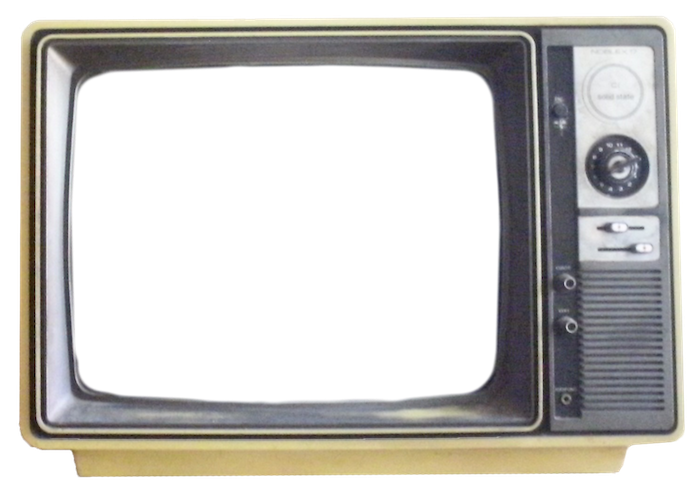
THE DIFFERENCES IN HOW
CNN
MSNBC
& FOX
COVER THE NEWS
Cable news is a major source of information for millions of Americans. But the story you get depends on the channel you watch.
Think, for a moment, about where you get your news. Maybe you leave for work each morning with black fingertips from the smudged ink of a newspaper. Maybe the dulcet delivery of your local NPR host is the only thing that gets you through your commute. Maybe you’re a bona fide Twitter addict. Or maybe, like half of American adults, you learn about the world through your television.
Though its popularity is waning, TV news is still a big deal. Just last year, a Pew study found that cable news was considered the “most helpful” source of information for the 2016 election. It’s especially popular among older generations, which also happens to be the group that’s most likely to turn out on election day. Given the importance of TV news and the accusations of partisan bias often lobbed at cable networks, it’s worth exploring what the news we’re getting from TV actually is and how that changes depending on what channel you watch.
To do that, we examined chyrons (the text at the bottom of the screen) from three major cable networks: CNN, Fox, and MSNBC. By looking at the words and phrases used between August 25, 2017, and January 21, 2018, we can get a sense of the differences in how each network covers the news and how a viewer’s perception of the world might change depending on which one they watch.

CLINTON
| Channel | Num. Uses |
|---|---|
| Fox | |
| MSNBC | |
| CNN |
Choosing the News
Let’s start with something simple: an overview of the words used in each network’s chyrons. We’ll plot each word as a dot on this triangle, where the closer a dot is to a particular network’s name, the more likely the word it represents is to be used by that network than the others.
For example, these three dots represent anchors from the three networks: Anderson Cooper, Lester Holt, and Tucker Carlson.
Since these names are used very frequently by their respective channels and rarely by the others, they sit very close to their own corner. A word that is used about equally would end up in the middle.
Here are the rest of the words. Now, we’ll go through some major news topics from the past few months and see where words related to those topics fall on the chart.
The Russia Investigation
The investigation into the Trump campaign’s ties to Russia has been a major news item since the 2016 election, but the bulk of its cable coverage has come from MSNBC.
mueller flynn putin kremlin moscow russia obstruct
The Clintons
Though Hillary Clinton has made few public appearances following the 2016 election, she, her family, and events related to her campaign have still been a big news item on Fox.
uranium benghazi chelsea server abedin podesta
Hurricanes
2017 had one of the most active hurricane seasons in recorded history. Storms slammed the southern United States and Puerto Rico, causing hundreds of deaths and billions of dollars in damages. CNN’s coverage focused on hurricanes more than the other networks.
irma storm wind pummel tropic caribbean mph
NFL Protests
Though all three networks covered the NFL protests, Fox focused slightly more on Colin Kaepernick and the word “anthem.”
nfl kneel anthem kaepernick flag
North Korea
Coverage of North Korea’s development of nuclear-capable missiles has been covered about equally by the three networks.
korea kim nuclear icbm launch rocket
Explore
Filter the chart or search for a word like "Trump" or "antifa".
Filter by num. occurrences
Find a word
Whoops, that word isn't here.
Which networks use which words the most?
Dots are positioned based on proportion of uses of each word attributed to each channel. Counts are normalized based on the total number of words used by each channel.
Burn Out or Fade Away
So far, we’ve focused on raw word counts. That’s useful for getting a broad sense of the issues networks are focusing on, but it leaves out a big part of the picture.
You’ve probably heard about the 24-hour news cycle—the phenomenon where reporters scramble to cover a breaking news event before it fades from the public eye and another item takes its place.
Michael Flynn
Here’s an example of a news event that follows that pattern. This chart shows how frequently the word “Flynn” was used by the three networks over time. There’s a big spike on December 1, when Michael Flynn pleaded guilty to lying to the FBI, but coverage quickly tapers off.
But that’s not always the case. Some news items are so big and persistent that they’re almost always in the spotlight.
President Trump
Coverage of President Trump, for example, is near-constant. It ebbs and flows and there are slight differences between networks, but for the most part, it’s always there.
Finally, there’s the “long tail” pattern. That’s when a news event receives lots of initial coverage, but instead of immediately fading away, it sticks around in the background for a while. It’s especially interesting when only one network keeps up the coverage.
National Anthem Protests
Colin Kaepernick began kneeling for the national anthem in 2016, but coverage picked up in early September, when Trump tweeted about the protest. Coverage of the protests quickly tapered off for all of the networks except one. Fox kept it in the news through November.
That means even weeks after the national anthem protests had faded from the screens and papers of most American news consumers, Fox viewers were still being reminded of them on a daily basis.
Explore
Whoops, that word isn't here.
Use of word over time
Lines are based on proportion of minutes in a given day during which the selected word was used.
Context is Key
All this data about how often words are used is interesting, but it still misses something big. It’s entirely possible for two networks to cover the exact same event or issue completely differently. We need to look at context.
To do that, we’ll examine the words that are used with other words in the same chyron. For example, there’s a difference in meaning between using the word “gun” in the context of “violence” versus “control.”
Gun
Here, we can see that difference clearly. In covering guns, Fox’s chyrons focus overwhelming on gun control, whereas the topics on MSNBC and CNN were more varied.
Right now we’re looking at the weighted ranking of related terms. That’s the number of times the related word is used in the same chyron as “gun” multiplied by how uniquely that term is used with “gun” compared to other terms.
This draws out related words that are both used frequently with the selected word and unique to the selected word, rather than focusing on words like “Trump,” which are commonly used with, well, everything. You can use the toggle to see what the list looks like based on the raw count. Now, let’s look at a few more words.
Dossier
The dossier compiled by ex-MI6 spy Christopher Steele has been a major sticking point in the Trump-Russia investigation. In covering the dossier, Fox focuses on the fact that it’s anti-Trump, whereas MSNBC emphasizes the way it connects Trump to Russia.
Trump
Speaking of Trump, here’s how he’s covered. Fox sticks out by focusing on his title while the other networks discuss policies and controversies.
Tweet
In discussing Twitter (usually the president’s), Fox focuses on the tweeter, CNN focuses on the action of tweeting, and MSNBC focuses on the tweet’s content.
Explore
Find a word
Whoops, that word isn't here.
Words most associated with
Here’s what this all comes down to: no matter how you slice it, whether by overall coverage, coverage over time, or context, two people who watch different channels could come away with vastly different ideas of key issues in the news.
This isn’t just a hypothetical concern. Studies show that a person’s choice in cable network can be predicted based on their political persuasion, and that cable news can help reinforce people’s beliefs.
Even if people continue to “cut the cord”, political polarization in news comsumption will still be an issue. The best thing you can do? Look to multiple sources for your news and be aware of how the editorial decisions of the sources you choose might be shaping your views.

Data and methodology
Data comes from the Internet Archive’s Third Eye Project. Chyrons for each channel are constantly captured via OCR, beginning on August 25, 2017. We filtered the data to look at unique real words used per minute. This was done to account for duplicate chyrons and the substantial amount of noise in the data set.
A word was considered a “real word” if it was included in a list of 25,000 common English words or in the headline or abstract of any New York Times story during the period of data collection. This was done to account for names and other news-related terms like “Obamacare” which are important but aren’t used in common parlance. We didn’t just use a dictionary because that would leave lots of relatively meaningless “Scrabble words” like “oba” and “vau.” Finally, stop words like “but” and “to” were eliminated.
Since the data collection is continuous, the raw data includes text from commercials. To ameliorate this problem, we eliminated “chyrons” that contained 800 numbers, websites, and certain medical phrases (e.g. “call your doctor”). This isn’t perfect, but it’s better than nothing.
Finally, we noticed that CNN’s feed used an unusually high number of city names. After watching lots of CNN, we realized that that the names were coming from the continuous weather feed at the bottom of the chyron. We eliminated those from the final data, because they don’t reflect editorial decisions.